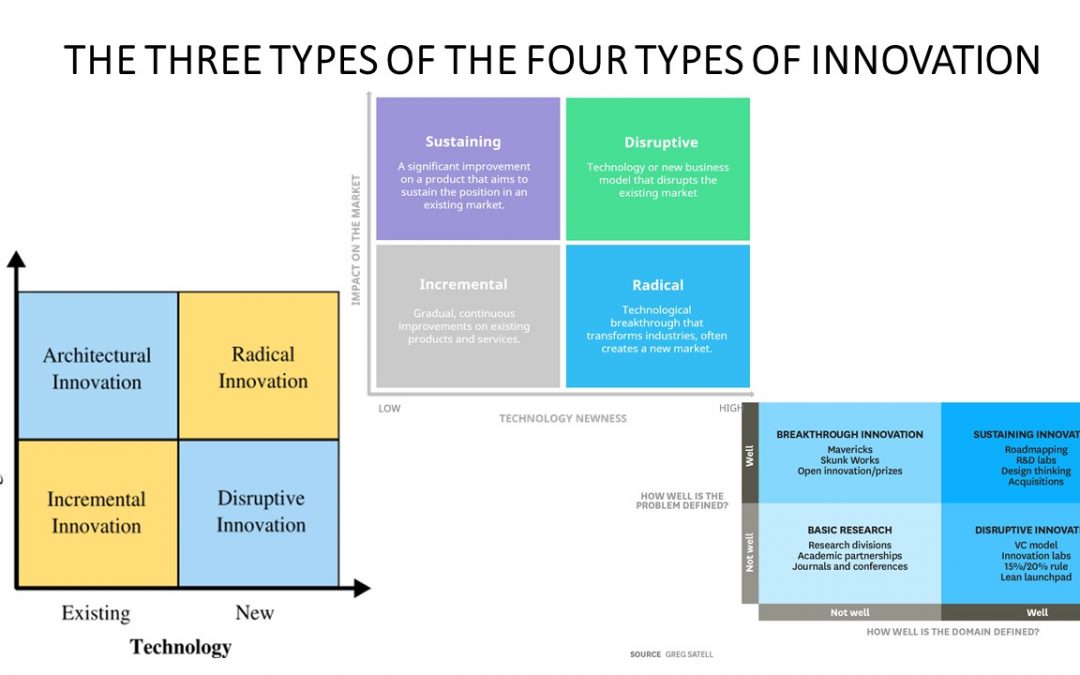I often point out that innovation is one of those words that gets USED more often than it gets DEFINED. That is true, but it’s also true that innovation gets defined ALL THE DANG TIME, and in lots of interesting and amusing ways.
For example, ask your favorite search engine to show you “types of innovation,” and you’ll be treated to a bewildering collection of frameworks, infographics, and diagrams, many of which claim to show THE different types of innovation. The image above shows three types of the four types of innovation, while the image below shows several different ways to arrange the 10 (9?) types of innovation.

It’s ok to have a little laugh about all this. This situation is indeed kinda funny, and can also be a little confusing. Here’s the good news – this situation is also informative and educational if we approach it the right way.
Instead of getting too attached to any particular representation of THE types of innovation, we might adopt a curious posture towards all of them. We may find that each framework illuminates some facet of innovation… and casts a shadow on other facets. We may discover that while each one provides some insight on the topic, each framework also introduces gaps that leaves important aspects unaddressed. Thus, we may benefit by becoming familiar with a whole bunch of them. And when we do that, we might even develop our own framework, our own contribution to the discussion.
As Seth Godin often points out, one hallmark of a professional – in any field – is that he or she does the reading, and is familiar with the latest developments and thinking in their field. So please consider this your personal invitation to do the reading this year. If you want to be a professional in a field that values innovation, you should be able to define innovation and not only discuss the different types, but also the different taxonomies – why and how they differ, the strengths and weaknesses and applications of each.

